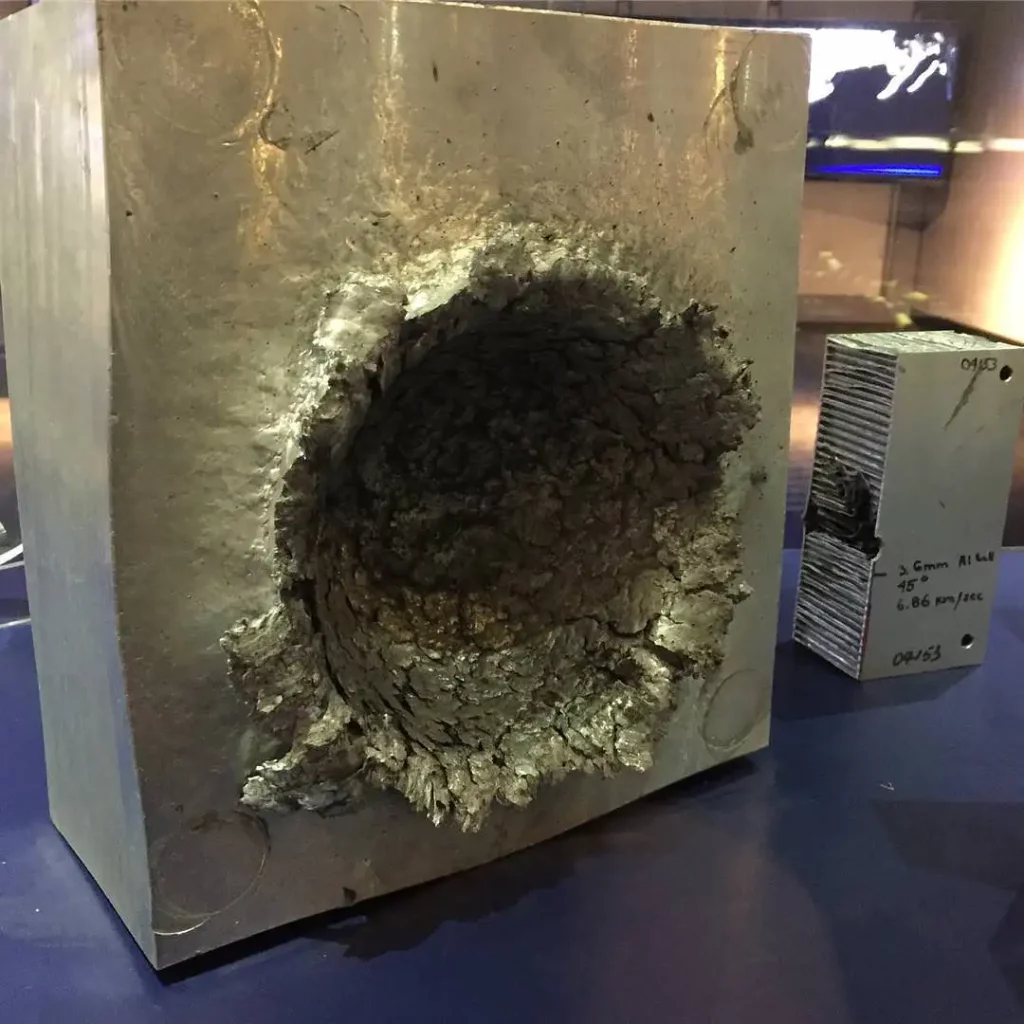Space is not the place to dispose of trash because it transforms everything into a high-velocity projectile that can inflict colossal damage.
Because of the machinery and little pieces of rubbish that people have left in Earth’s orbit, space isn’t as empty as it should be. These tiny fragments, which are orbiting our globe at a speed of roughly 15,000 mph, have been counted by the ISS at about 500,000. also 14.17 g-force. Or 24,140kph.
An image of what a 1/2 oz. of space junk can do to a chunk of solid aluminium was shared on Reddit by an unidentified person who claims to work in the aerospace industry. This experiment, carried out by a light-gas pistol in close proximity, demonstrates the harm that even a little quantity of space debris can cause:Really spooky, huh? Although this appears to be very deep, the crater is just approximately 5 inches deep. However, it’s something that’s on the end of a pencil that’s roughly the size and weight of an eraser that’s the reason.

Really spooky, huh? Although this appears to be very deep, the crater is just approximately 5 inches deep. However, it’s something that’s on the end of a pencil that’s roughly the size and weight of an eraser that’s the reason.
Being roughly the size of a football field, the International Space Station (ISS) is a prime target for space debris. It must adjust its orbit to avoid being hit in order to resolve this. The ISS occasionally receives paint chip-sized fragments, necessitating weeks of staff labour to repair the ship.
Which is that? Want to learn something else fascinating about space debris? Well, from 1965 to 1967, when the Cold War was at its worst, the United States sent hundreds of thousands of tiny needles into space in an effort to detect what can best be described as powerful radio signals. The needles just clumped together into groups, not working at all as well as intended and becoming high-velocity projectiles. About 38 of these clumps are still in orbit fifty years later, despite the fact that occasionally they crash into the atmosphere of Earth and burn up.















